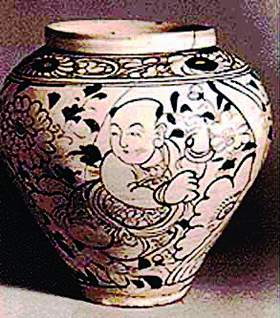China raises sunken merchant ship after 800 years
Updated: 2007-12-22 14:25
An 800-year-old merchant ship was raised from the bottom of the South China Sea on Saturday, loaded with artefacts that might confirm the existence of an ancient maritime trade route linking China and the West.
 |
The 30-metre (100-foot) wooden vessel, containing thousands of gold, silver and porcelain trading goods, was hoisted onto a barge in a steel basket as high as a three-storey building, a live broadcast by national television showed.
Named the Nanhai No. 1 or "South China Sea No. 1" by archaeologists, the ship was discovered in 1987 off the coast of Guangdong Province, buried in two metres (6.5 feet) of silt at a depth of 30 metres.
The ship will be towed to a 150 million yuan (US$20 million) museum built to house it in Guangdong, where it will be placed in a tank dubbed the "crystal palace" with the same water temperature and pressure that it experienced on the seabed.
The museum is expected to open by the end of next year and visitors will be able to watch excavation of the ship from the silt encrusting it through windows in the sides of the tank. Full excavation could take years.
More than 4,000 gold, silver and porcelain containers have been found on the Nanhai No.1, one of the biggest and oldest merchant ships ever recovered in China, Xinhua news agency said.
Also discovered were 6,000 copper coins from the Song Dynasty (960-1279 AD), when the boat was built. Archaeologists believe they might find tens of thousands more artefacts.
The Nanhai No.1 could provide evidence of a "Marine Silk Road" linking China's Guangdong and Fujian provinces to Southeast Asia, Africa and Europe, similar to the better-known, overland Silk Road stretching across central Asia into Europe.
"The 'Marine Silk Road', like the ancient Silk Road which connected China with south, west and central Asia and Europe, was also a bridge linking Eastern and Western cultures," said Huang Zongwei, professor at Guangdong's Sun Yat-Sen University.
"But evidence for existence of the route has been rare," he told Xinhua.
|
|
|
||
|
||
|
|
|
|